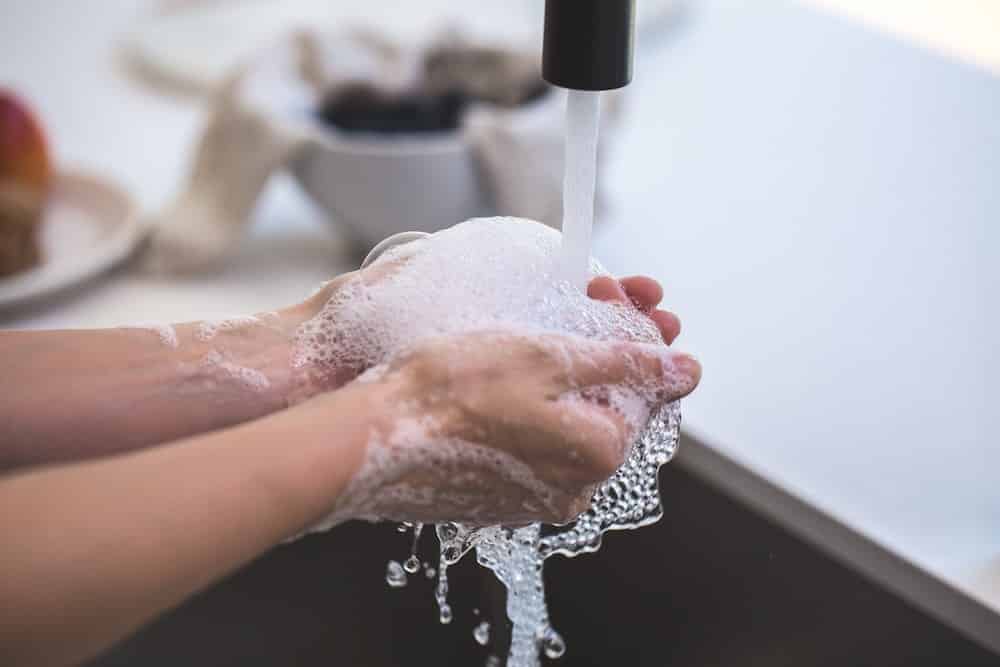
Picture this: your kitchen is in serious need of a thorough cleaning. You soak a cloth in warm water from the tap, put a little soap on it, and start scrubbing your counters. Even though you’re sure you used plenty of elbow grease, when you look back at your work, you notice white spots and a thin film over the countertops. Where is that coming from?
We’re here to answer that question and tell you whether you still need water treatment when your water comes from city water sources.
Why is water treatment necessary?
Without water treatment, soap scum and white film are the least of your worries. American water comes from surface water (streams, rivers, and lakes) or underground and groundwater sources. Both of these sources contain significant contamination that needs to be treated before it is safe to drink. Contamination may come from pesticides, trash, or even heavy metals.
How do cities treat water?
No specific water treatment method is followed by every city, as each municipality’s water has its own problems. However, most cities will follow a few standard steps to treat water before it is distributed to its residents:
1. Coagulation and Flocculation
The first steps in the treatment process are known as coagulation and flocculation. These steps remove dirt and other contaminants from groundwater. Coagulation comes first, where chemicals are added to the water that binds dirt and other compounds together. As the compounds combine, they become “floc,” which are larger particles.
2. Sedimentation
Once the water contains floc, the sedimentation step can begin. Floc is heavier than water, so it sinks to the bottom of the supply. The floc mixes with itself, forming a sludge layer at the bottom for easy removal. This sludge is full of the worst stuff in water—bacteria, dirt, and viruses.
3. Filtration
Next, filtration separates the solids from the liquids, removing floc from the water. Once the floc is gone, filters remove any excess particles that were initially missed.
4. Disinfection
Most of the time, the disinfection of water is completed with the use of chlorine. When chlorine is added to the water supply, it kills parasites or other organisms that survived the previous steps.
5. Other Treatments
Some cities will require further treatments to make water safe to drink, especially if there are problems with the pipes in your area. For instance, cities with lead pipes add phosphate to the water to protect it from accumulating lead.
Understanding the Consumer Confidence Report
The Consumer Confidence Report (CCR) provides a lot of helpful information. Unfortunately, most people can’t understand what the CCR says since it looks complicated. The MCL numbers are the most important things to look for in a CCR.
MCL stands for maximum contaminant level. This section of the report tells you the highest levels of contaminants that can safely exist in your drinking water. Keep an eye out for numbers that exceed the MCL; you shouldn’t drink water with a high number of contaminants.
Hard Water
While the city addresses all sorts of problems in their water treatment facilities, they ignore minerals like calcium and magnesium. While these minerals are perfectly safe to drink, they’re far from ideal to use in your home.
Calcium and magnesium make water “hard.” Hard water can lead to all sorts of problems in your home, but since it’s safe to drink, the city lets you decide for yourself whether you want to soften your water. The more of these minerals that are present in your water, the harder your water is.
Cleaning With Hard Water
As stated earlier, white film and soap scum directly result from cleaning with hard water. Calcium and magnesium interact with soap in a way that leaves scum behind after cleaning. If you use soap to clean your home without softening your water first, you’ll probably notice gross soap spots over every surface.
In addition to counters and bathtubs, you may also notice spots on the dishes you remove from your dishwasher. Most of the time, the spots come from mineral deposits, which is a fast way to turn a fancy dinner party into a gross one.
Hard water can also negatively impact your laundry. If you’ve noticed problems with quickly fading colors, your home might have a hard water problem. Hard water dulls bright colors and can even turn whites into a dingy shade.
Bathing With Hard Water
Since hard water interacts poorly with soap, it can sometimes get in the way of effective bathing. Showering with hard water can leave behind a thin layer of soap scum on the skin. This layer dries out your skin and can even cause irritation.
Soft water is much better for bathing because it keeps your natural oils intact, allowing your body to better retain moisture. For people who have trouble with eczema, soft water can have a significant impact on alleviating your symptoms.
Hard Water and Plumbing Problems
Finally, hard water is not only a problem when soap is involved. Hard water can also cause issues inside your pipes. Water that’s high in minerals causes a process known as water scaling, which is a buildup of material at the edges of your pipes.
The longer you allow hard water to flow in your home, the more time scale has to build up. Eventually, scaling can clog up your pipes and reduce the effectiveness of your appliances. Since the city won’t do anything to remove calcium and magnesium from your water, the best way to address these issues is by utilizing a water softener installation service in Las Vegas.
Now that you understand why city water sources still need water treatment, it’s time to reach out to Rain Water Conditioning of Las Vegas. We’ll get you set up with a water softener or water conditioning to improve the effectiveness of water in your home and keep things running smoothly. Contact us today!
Tags: Choosing the Right Water Filtration System, Water Filtration Systems in Las Vegas